December 13th Scots Book of Days. Raid on Ross
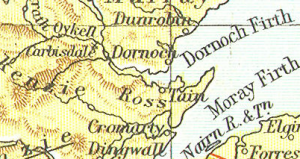 December 13 – 1491 sometime this year. Raid on Ross with Clan Mackenzie against the Clan MacDonald of Lochalsh, Clan MacDonald of Clanranald the Clan Cameron and the Chattan Confederation of Clan Mackintosh. Map showing Ross between the Firths of Moray and Dornoch.
December 13 – 1491 sometime this year. Raid on Ross with Clan Mackenzie against the Clan MacDonald of Lochalsh, Clan MacDonald of Clanranald the Clan Cameron and the Chattan Confederation of Clan Mackintosh. Map showing Ross between the Firths of Moray and Dornoch.
1553 King Henry IV of France born, (d. 1610). His daughter Henrietta Maria, became Queen of England and Scotland as the royal consort to Charles 1st King, and mother of Charles 2nd and James 2nd and grandmother of Mary 2nd, William 3rd, and Anne. Diana Spencer, mother of Princes Harry and William WALES is a descendant. The state of Maryland is named for Henrietta Maria of France.
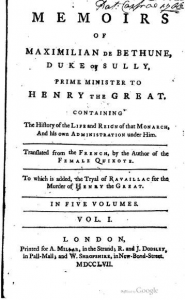 1560 Maximilien de Béthune, born, 1st Duke of Sully (13 December 1560 – 22 December 1641) was soldier, minister, Huguenot and faithful right-hand man who assisted Henry IV of France in the rule of France. Scots connection with bookseller Andrew Millar 6th (clans Stewart, Lockhart, Hunter).
1560 Maximilien de Béthune, born, 1st Duke of Sully (13 December 1560 – 22 December 1641) was soldier, minister, Huguenot and faithful right-hand man who assisted Henry IV of France in the rule of France. Scots connection with bookseller Andrew Millar 6th (clans Stewart, Lockhart, Hunter).
Memoirs of Maximilian de Bethune: duke of Sully, prime minister to Henry the Great in Five Volumes Vol. I. London Printed for A. Millar in the Strand, eand J .Dodsley in Pall-Mall, and W. Shropshire, in New Bond Street MDCCLVII.
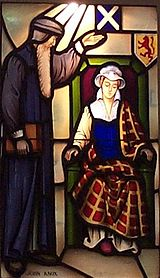 1562 Mary sent for Knox again after Knox gave a sermon denouncing certain celebrations which Knox had interpreted as rejoicing at the expense of the Reformation.
1562 Mary sent for Knox again after Knox gave a sermon denouncing certain celebrations which Knox had interpreted as rejoicing at the expense of the Reformation.
Stained glass window of John Knox admonishing Mary, Queen of Scots.
1585 – William Drummond 2nd Laird of Hawthornden, born, Scottish poet (d. 1649). His poems show close study of Italian poets.
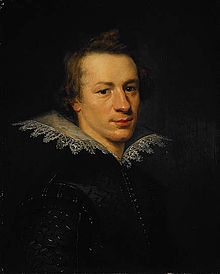 Drummond of Cargill Stubhall Perth 8th c 2Hamilton2Stewart 2miller2Simmons 2Choate zoe
Drummond of Cargill Stubhall Perth 8th c 2Hamilton2Stewart 2miller2Simmons 2Choate zoe
William Drummond of Hawthornden by Abraham Blyenberch, oil on canvas 1612, Scottish National Portrait Gallery, Edinburgh
Sir Robert Drummond of Carnock, Master of Work to the Crown of Scotland, had John Drummond, first laird of Hawthornden married Susannah Fowler, [sister of William Fowler, poet] had William Drummond.
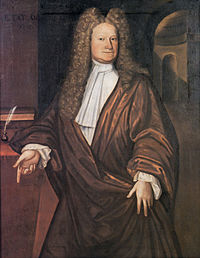 1654 Robert Livingston the Elder (1654–1728) was born in the village of Ancrum, near Jedburgh, in the County of Roxburgh, Scotland, one of seven children of the Reverend John Livingston, a lineal descendant of the 4th Lord Livingston, ancestor of the earls of Linlithgow and Callendar, a minister of the Church of Scotland, who was sent into exile in 1663 due to his resistance to attempts to turn the Presbyterian national church into an Episcopalian (.e. Anglican Catholic) institution. The exiled family were raised in Rotterdam, in the Dutch Republic, thus Robert Livingston was fluent in the Dutch language, which helped him greatly in his later career in the former Dutch colony of New Netherland. Ancestor of Robert Livingston and Philip Livingston a Founding Father of the United States. Portrait of Robert Livingston the Elder.
1654 Robert Livingston the Elder (1654–1728) was born in the village of Ancrum, near Jedburgh, in the County of Roxburgh, Scotland, one of seven children of the Reverend John Livingston, a lineal descendant of the 4th Lord Livingston, ancestor of the earls of Linlithgow and Callendar, a minister of the Church of Scotland, who was sent into exile in 1663 due to his resistance to attempts to turn the Presbyterian national church into an Episcopalian (.e. Anglican Catholic) institution. The exiled family were raised in Rotterdam, in the Dutch Republic, thus Robert Livingston was fluent in the Dutch language, which helped him greatly in his later career in the former Dutch colony of New Netherland. Ancestor of Robert Livingston and Philip Livingston a Founding Father of the United States. Portrait of Robert Livingston the Elder.
Sir Alexander de Levinstoun of Callendar[1] King James 2nd , Justice General of Scotland 1449, Ambassador to England married Lady Dundas had à
James Livingston, 1st Lord Livingston (d. 1467)
James Livingston, 2nd Lord Livingston (d. 1497)
James Livingston, 3rd Lord Livingston (d. 1503)
William Livingston, 4th Lord Livingston (d. 1518) {a lineal descendant was Rev. John Livingston, father of Robert Livingston the Elder of New York, ancestor of the Founding Father, Robert Livingston}
Sir Alexander Livingston is 19th Great grandfather of Sophie Mae Choate,
Philip Livingston, signer of the Declaration of Independence, from New York, called upon Wilford Woodruff, ‘as an Apostle of the Lord Jesus Christ, in the Temple at St. George, two consecutive nights,’ (August 22,23 1877) and demanded at ‘my hands that I should go forth and attend to the ordinances of the House of God for them,’ (Wilford Woodruff, Conference Report, April 1898, p. 89-90.)
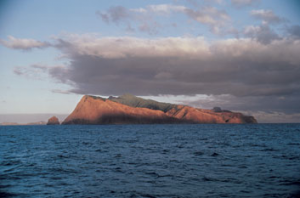 1721 – Alexander Selkirk, died. Scottish sailor and castaway (b. 1676 Lower Largo, Fife, Scotland,) Marooned in 1704 for four years on the Juan Fernández Islands off Chile.
1721 – Alexander Selkirk, died. Scottish sailor and castaway (b. 1676 Lower Largo, Fife, Scotland,) Marooned in 1704 for four years on the Juan Fernández Islands off Chile.
After months at sea, Selkirk’s ship put in at the island (named Robinson Crusoe Island in 1966) with a leaky hull and restive crew. But an extended stay didn’t quell Selkirk’s misgivings. (Wolfgang Kaehler). Alexander’s Scottish name was Selcraig. Yes, Alex is family. I [By Bruce Selcraig] am, according to Scottish genealogist Tony Reid, directly descended from Alex’s oldest brother, John. Alex apparently never had children. When Alexander Selcraig was 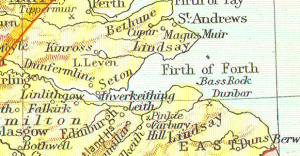 born in Lower Largo, Scotland, in 1676, it was a fishing village in Fife with fewer than a thousand souls, across the Firth of Forth (an estuary of the North Sea) from bustling Edinburgh, then a metropolis of close to 30,000. Virtually all of these accounts lean heavily on one source, the records of the church (or kirk) elders at the Largo Kirk, known as the Kirk Session Minutes, which I found at the St. Andrews University Library. http://www.smithsonianmag.com/history-archaeology/crusoe.html#ixzz2PvNHVp6s
born in Lower Largo, Scotland, in 1676, it was a fishing village in Fife with fewer than a thousand souls, across the Firth of Forth (an estuary of the North Sea) from bustling Edinburgh, then a metropolis of close to 30,000. Virtually all of these accounts lean heavily on one source, the records of the church (or kirk) elders at the Largo Kirk, known as the Kirk Session Minutes, which I found at the St. Andrews University Library. http://www.smithsonianmag.com/history-archaeology/crusoe.html#ixzz2PvNHVp6s
Selkirk’s story aroused great interest at home, and inspired Daniel Defoe’s fictional character Robinson Crusoe.
1776 Under the command of Colonel William Harcourt, Col.Tarleton (UK) was part of a scouting party sent to gather intelligence on the movements of General Charles Lee (USA) in New Jersey. On 13 December 1776, Tarleton surrounded a house in Basking Ridge, New Jersey and forced Lee, still in his dressing gown, to surrender by threatening to burn the building down. Lee was taken back to New York as a prisoner, and was later exchanged. Major Charles Cochrane (Scot clan Cochrane) (b 12.01.1749, d 18.10.1781) 2nd in command to Lt. Col Banastre Tarleton, (UK) 16th Queen’s Light Dragoons, at capture of American General Charles Lee (USA) Dec 13 December 1776 at Basking Ridge.
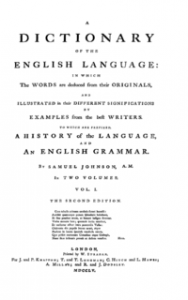 1784 Samuel Johnson (1709–1784) , Moralist, died. An English literary figure and compiler of A Dictionary of the English Language published by Andrew Millar VI, London Bookseller (clans Lockhart, Stewart). Millar was the lead publisher to back the first folio edition of Samuel Johnson’s Dictionary. The lexicographer’ Plan of a Dictionary of the English Language was issued in 1747 with Millar as one of the seven publishers who commissioned it, but not until 1755 did they extract the last sheets from the unpunctual author.
1784 Samuel Johnson (1709–1784) , Moralist, died. An English literary figure and compiler of A Dictionary of the English Language published by Andrew Millar VI, London Bookseller (clans Lockhart, Stewart). Millar was the lead publisher to back the first folio edition of Samuel Johnson’s Dictionary. The lexicographer’ Plan of a Dictionary of the English Language was issued in 1747 with Millar as one of the seven publishers who commissioned it, but not until 1755 did they extract the last sheets from the unpunctual author.
. London A. Millar MDCCLV.
Two conflicting accounts, the Life of Samuel Johnson LLD, by his executor Sir John Hawkins, published in 1787, and Boswell’s work of the same title, published in 1791, report an interchange between Johnson and Millar on the day the Dictionary was finished.
Boswell of Auchinleck Ayr 13c 2Arnot2Colville 2Semple 2Montgomerie2Cochrane 2Miller2Simmons 2Choate zoe ToaG
Hawkins wrote: ‘That day it was his happiness to see; for, by the end of the year 1754, he had completed his copy, not more to his own ease and satisfaction YYMA 63 than to the joy of Millar the bookseller, the principal proprietor of the work, and the guardian or treasurer of the fund out of which the payments were from time to time issued. To say the truth, his joy on the occasion was so great, that he could not refrain from expressing it somewhat intemperately, as appears by the following acknowledgement of the receipt of the last sheet of the manuscript:
‘Andrew Millar sends his compliments to Mr. Samuel Johnson, with the money for the last sheet of copy for the dictionary, and thanks God he has done with him.’
‘To which Johnson returned this good humoured and brief answer:
”Samuel Johnson returns his compliments to Mr. Andrew Millar, and is very glad to find, as he does by his note, that Andrew Millar has the grace to thank God for anything.”
Boswell, (Scott’s clan Boswell) dismissing Hawkins’ account with the contempt that he heaped upon the entire work, says: [Andrew Miller VI, 1705-1768, London by the Strand].
‘Mr. Andrew Millar, bookseller in the Strand, took the principal charge of conducting the publication of Johnson’s Dictionary and as the patience of the proprietors was repeatedly tried and almost exhausted, by their expecting that the work would be completed within the time which Johnson had sanguinely supposed, the learned author was often goaded to dispatch, more especially as he had received all the copy-money, by different drafts, a considerable time before he had finished his task. When the messenger who carried the last sheet to Millar returned, Johnson asked him, ‘Well, what did he say?’ ‘Sir,’ answered the messenger, he said, ‘Thank God I have done with him.’ ‘I am glad,’ replied Johnson, with a smile, ‘that he thanks God for anything.’ It is remarkable that those with whom Johnson chiefly contracted for his literary labours were Scotchmen, Mr. Millar and Mr. Strahan.’’
A gloss on Johnson’s praise of Millar as having raised the price of literature is provided by Hawkins’ account of the reckoning that followed the Dictonary’s YYMA 64 completion.
‘It has already been mentioned, that Johnson’s inducement to this under-taking was the offer of a liberal reward. The term liberal is indefinite, and, after the lapse of twenty years, during which such sums as from three to eight thousand pounds have been paid for copies, would hardly be allowed to fifteen hundred and seventy-five, which was the sum stipulated for the Dictionary. Of this, Johnson, who was no very accurate accountant, thought a great part would be coming to him on the conclusion of the work; but upon producing, at a tavern- meeting for the purpose of settling, receipts for sums advanced to him, which were indeed the chief means of his subsistence, it was found, not only that he had eaten his cake, but that the balance of the account was greatly against him. His debtors were now become his creditors: but they, in a perfect consistency with that liberal spirit which, in sundry instances, the great booksellers are known to have exercised towards authors, remitted the difference, and consoled him for his disappointment by making his entertainment at the tavern a treat.’
Johnson is also the subject of “the most famous single work of biographical art in the whole of literature”: James Boswell’s Life of Samuel Johnson.
Boswell of Auchinleck Ayr 13c 2Arnot2Colville 2Semple 2Montgomerie2Cochrane 2Miller2Simmons 2Choate zoe ToaG
William Hazlitt’s “Conversations of James Northcote, R.A.” includes anecdotes in which Johnson appears:
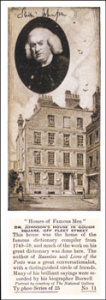 ‘ …I remember once being at the Academy, when Sir Joshua wished to propose a monument to Dr. Johnson in St. Paul’s, and West got up and said, that the King, he knew, was averse to anything of the kind, for he had been proposing a similar monument in Westminster Abbey for a man of the greatest genius and celebrity—one whose works were in all the cabinets of the curious throughout Europe—one whose name they would all hear with the greatest respect—and then it came out, after a long preamble, that he meant Woollett,1 who had engraved his Death of Wolfe.
‘ …I remember once being at the Academy, when Sir Joshua wished to propose a monument to Dr. Johnson in St. Paul’s, and West got up and said, that the King, he knew, was averse to anything of the kind, for he had been proposing a similar monument in Westminster Abbey for a man of the greatest genius and celebrity—one whose works were in all the cabinets of the curious throughout Europe—one whose name they would all hear with the greatest respect—and then it came out, after a long preamble, that he meant Woollett,1 who had engraved his Death of Wolfe.
| No. 11 –
DR. JOHNSON’S HOUSE IN GOUGH SQUARE, OFF FLEET STREET. This house was the home of the famous dictionary compiler from 1749-59, and much of the work on his great dictionary was done here. The author of Rasselas and Lives of the Poets was a great conversationalist, with a distinguished circle of friends. Many of his brilliant sayings were recorded by his biographer Boswell. Portrait by courtesy of The National Gallery.www.englishteastore.com/typhoo-history-cards-set-8.html “I was provoked, and I could not help exclaiming, ‘My God! what, do ye put him upon a footing with such a man as Dr. Johnson—one of the greatest philosophers and moralists that ever lived? We have thousands of engravers at any time !’ — and there was such a burst of laughter at this—Dance, who was a grave gentlemanly man, laughed till the tears ran down his cheeks; and Farington used afterwards to say to me, ‘Why don’t ye speak in the Academy, and begin with “My God!” as ye do sometimes 1″ |
I said, I had seen in a certain painter something of this humour, who once very goodnaturedly showed me a Rubens he had, and observed with great nonchalance, “What a pity that this man wanted expression!” I imagined Rubens to have looked round his gallery. “Yet,” he continued, “it is the consciousness of defect, too, that often stimulates the utmost exertions. If Pope had been a fine, handsome man, would he have left those masterpieces that he has 1 But he knew and felt his own deformity, and therefore was determined to leave nothing undone to extend that corner of power that he possessed. He said to himself, They shall have no fault to find there. I have often thought when very good-looking young men have come here intending to draw, ‘What! are ye going to bury yourselves in a garret 1’ And it has generally happened that they have given up the art before long, and married or otherwise disposed of themselves.”
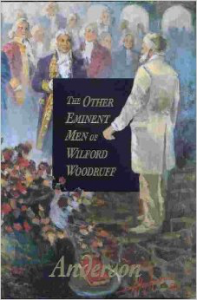 1877 Samuel Johnson (his full spirit) called upon Wilford Woodruff, ‘as an Apostle of the Lord Jesus Christ, in the Temple at St. George, two consecutive nights,’ [August 22,23 1877] and demanded at ‘my hands that I should go forth and attend to the ordinances of the House of God for them,’ (Wilford Woodruff, Conference Report, April 1898, p. 89-90.)
1877 Samuel Johnson (his full spirit) called upon Wilford Woodruff, ‘as an Apostle of the Lord Jesus Christ, in the Temple at St. George, two consecutive nights,’ [August 22,23 1877] and demanded at ‘my hands that I should go forth and attend to the ordinances of the House of God for them,’ (Wilford Woodruff, Conference Report, April 1898, p. 89-90.)
1880 Alexander William Crawford Lindsay, 25th Earl of Crawford, 8th Earl of Balcarres (16 October 1812 – 13 December 1880), styled Lord Lindsay between 1825 and 1869, was a Scottish peer, art historian and collector. He travelled to the Middle East in 1837/38, writing Letters on Egypt, Edom and the Holy Land. Lord Crawford’s Armorial published 2008, Alex Maxwell Findlater editor. ‘When the 25th Earl of Crawford bought an armorial in 1863, he was delighted,. He assumed the arms of Sir David Lyndsay of the Mount Secundus on the first page, the armorial was prepared for him. To protect the manuscript he placed it in his library in a leather bound case stamped ‘Armorial of Scoltland M.S> Sir David Lindsay of the Mount II’ So it remained in place until 2008, when it was published by the Heraldry Society.
Crawford of drongan and Haining 1100 2douglas2Stewart 2Ruthven2Kinchin 2jared2Simmons 2Choate zoe
1940 HM Queen Mary, Cunard Line, built Clydebank Scotland, converted to troopship. Degaussing strip installed in Sydney.
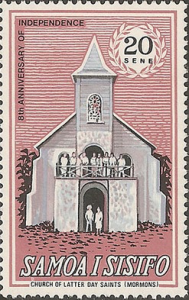 1946 Samoa UN Trusteeship. stamp, featuring a CHURCH OF [Jesus Christ] LATTER DAY SAINTS, Mormon meetinghouse, celebrated the eighth anniversary of Samoan independence of 1962. Robert Louis Balfour Stevenson (13 November 1850 – 3 December 1894) was a Scottish novelist, poet, essayist, and travel writer, lived in Samoa from 1889 until his death in 1894.
1946 Samoa UN Trusteeship. stamp, featuring a CHURCH OF [Jesus Christ] LATTER DAY SAINTS, Mormon meetinghouse, celebrated the eighth anniversary of Samoan independence of 1962. Robert Louis Balfour Stevenson (13 November 1850 – 3 December 1894) was a Scottish novelist, poet, essayist, and travel writer, lived in Samoa from 1889 until his death in 1894.
1957 Vivian M. Masayon (nee Specman) Mrs. Walter M. (clans Stewart, Hunter, Meldrum, Cochrane, Lockhart)
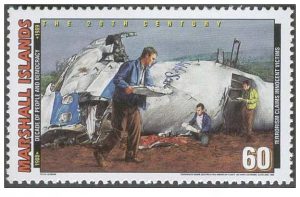 1988 Lockerbie bombing of Pan Am Flight 103 on 21 December 1988 when the wreckage fell on the town of Lockerbie in the Dumfries and Galloway region of south-western Scotland. ‘On 13 December, 1988 the warning was posted on bulletin boards in the U.S. Embassy in Moscow and eventually distributed to the entire American community there, including journalists and businessmen. As a result, a number of people allegedly booked on carriers other than Pan Am, leaving empty seats on PA103 that were later sold cheaply in “bucket shops”. The US [Federal Aviation Administration] FAA Eastern Region at JFK international airport upper management, which had review responsibility for Pan Am, passed the periodic flight review ride from New York to London to a lower grade aviation safety inspector, in case the warnings were true, without mentioning the warnings. The inspector flew outbound on the doomed plane, but came back on an earlier flight and missed the bombing (as related to John Choate in 1991 by the safety inspector who took the flight, and never trusted his supervisors ever again.)
1988 Lockerbie bombing of Pan Am Flight 103 on 21 December 1988 when the wreckage fell on the town of Lockerbie in the Dumfries and Galloway region of south-western Scotland. ‘On 13 December, 1988 the warning was posted on bulletin boards in the U.S. Embassy in Moscow and eventually distributed to the entire American community there, including journalists and businessmen. As a result, a number of people allegedly booked on carriers other than Pan Am, leaving empty seats on PA103 that were later sold cheaply in “bucket shops”. The US [Federal Aviation Administration] FAA Eastern Region at JFK international airport upper management, which had review responsibility for Pan Am, passed the periodic flight review ride from New York to London to a lower grade aviation safety inspector, in case the warnings were true, without mentioning the warnings. The inspector flew outbound on the doomed plane, but came back on an earlier flight and missed the bombing (as related to John Choate in 1991 by the safety inspector who took the flight, and never trusted his supervisors ever again.)
‘PLO warning.‘ Just days before the sabotage of the aircraft, security forces in a number of European countries, including Britain, were put on alert after a warning from the Palestine Liberation Organization (PLO) that extremists might launch terrorist attacks to undermine the then ongoing dialogue between the United States and the PLO.
Marshall Islands Terrorism Claims Innocent Victims 60 cents. The Maid of the Seas. The 20th Century.
Disclaimer: The author of each article published on this web site owns his or her own words. The opinions, beliefs and viewpoints expressed by the various authors and forum participants on this site do not necessarily reflect the opinions, beliefs and viewpoints of Utah Standard News or official policies of the USN and may actually reflect positions that USN actively opposes. No claim in public domain or fair use. © John Choate
[1] Sir Alexander Livingstone of Callendar, the eldest son, the celebrated guardian of James II. in his minority, was one of the jury on the trial of Murdach, duke of Albany, in 1424. On the assassination of James I. in 1437, he was appointed keeper of the young king’s person. The rival minister, Sir William Crichton, chancellor of the kingdom, retaining his majesty in the castle of Edinburgh, the queen-mother had him conveyed, enclosed in a chest, to Stirling, where she delivered him to his legal guardian, Livingstone. He subsequently besieged Crichton in the castle of Edinburgh, but a reconciliation took place between them. Afterwards quarrelling with the queen, he imprisoned her, in 1489. By another stratagem, Crichton regained possession of the king’s person, but by the intercession of HYPERLINK “http://www.electricscotland.com/webclans/htol/livings2.html” \t “_new” friends a lasting agreement was at length formed between the two ministers, and the king was committed to the care of Livingstone, who thus obtained the chief direction in the government. All differences between him and the queen were likewise settled by a solemn indenture dated 4th September 1489. In 1440 the sixth earl of Douglas, his brother David, and his friend Fleming of HYPERLINK “http://www.electricscotland.com/webclans/htol/livings2.html” \t “_new” Cumbernauld, were, chiefly at his instigation, inveigled into the castle of Edinburgh by Crichton, and beheaded there. In 1445, when the Douglases were at the height of their power, Sir Alexander was denounced a rebel, and in the following year he was imprisoned, but released on paying a large sum of money. However, Alexander, the younger of his two sons, was tried and beheaded He was ancestor of the Livingstones of Dunipace, one of whom was named in 1550 an extraordinary lord of session. On 4th July 1600, Jean Livingstone, Lady Warriston, daughter of John Livingstone of Dunipace, was beheaded at the foot of the Canongate, Edinburgh, for the murder of her HYPERLINK “http://www.electricscotland.com/webclans/htol/livings2.html” \t “_new” husband, John Kincaid of Warriston near that city. She was only 21 years of age, and is highly celebrated in several popular ballads of the period for her graceful appearance and uncommon beauty. Her father had great influence at court, but she is said to have declined all efforts for saving ber Iife. An account of her behaviour in prison and at the place of execution, was preserved among Wodrow’s MSS. in the Advocates’ Library, and is reported on in Pitcairn’s Criminal Trials. In 1449 Sir Alexander Livingstone was again received into favour, appointed justiciary of Scotland, and sent ambassador to England. He died soon after.
Utah Standard News depends on the support of readers like you.
Good Journalism requires time, expertise, passion and money. We know you appreciate the coverage here. Please help us to continue as an alternative news website by becoming a subscriber or making a donation. To learn more about our subscription options or make a donation, click here.
To Advertise on UtahStandardNews.com, please contact us at: ed@utahstandardnews.com.


Comments - No Responses to “December 13th Scots Book of Days. Raid on Ross”
Sure is empty down here...